Expert Panel on Statistics on Women and Beginning Farmers in the USDA Census of Agriculture
0226-AgCensus-Report of the Expert Panel on Statistics on Women and Beginning Farmers.docx
2017 Census of Agriculture
Expert Panel on Statistics on Women and Beginning Farmers in the USDA Census of Agriculture
OMB: 0535-0226
Report of the Expert Panel on Statistics on Women and Beginning Farmers in the USDA Census of Agriculture 30 September 2015
Introduction to the Topic and the Panel
In both governmental and agricultural sectors, there is increasing concern that the roles and contributions of women and of new/beginning farmers need to be more fully represented in the federal agriculture surveys.
Since the release of the 2012 Census of Agriculture, feedback to the US Department of Agriculture from the Agricultural Statistics Advisory Committee to NASS (National Agriculture Statistical Service) and from the public has identified the need to re-evaluate how NASS quantifies the contribution of women and new/beginning farmers. The public press and organizations within the farm/agriculture community have raised issues around the need to understand the roles of both women and young/beginning farmers and to see these represented in statistical statements about US Agriculture.
To this end, an Expert Panel was convened to assess the current state of reporting and to make recommendations for improvements with the full support of Joe Reilly, Administrator of NASS (National Agriculture Statistics Service), and Linda J. Young, Chief Mathematical Statistician and Director NASS Research and Development. The National Institute of Statistical Sciences (NISS) as an expert, neutral third-party was commissioned to assemble the Expert Panel drawing from academic, government, and agricultural sectors to be composed of panelists with recognized expertise in economics, sociology, statistics, policy, and agriculture.
A distinguished panel of 13 experts from all sectors was assembled; some in addition to their professional expertise also had personal experience of growing up on farms. Their brief biosketches appear in Appendix A to this report. The panel was chaired by Nell Sedransk, PhD, Director of NISS.
The charge to the Expert Panel was first to consider information currently published by NASS in light of the diversity in the organizational structure of contemporary farms and then to provide guidance on how to improve reporting for women and new/beginning farmers beginning with the 2017 Census of Agriculture. This information appears in Section 6 of the Agriculture Census questionnaire.
The panel met in person at USDA in Washington DC on 2 and 3 April; preliminary recommendations from this meeting were submitted to NASS shortly thereafter. The meeting agenda is included in Appendix A to this report.
Preparatory to the panel meeting, NASS staff assembled extensive material and/or links to materials that describe what NASS currently publishes on women and new/beginning farmers and also what NASS could publish with the data currently being collected. Additional materials were included from other US and international surveys (e.g., Census Bureau’s Survey of Business Owners) that also publish information on the participation by women and new/beginning business operators. Data collection forms in use by other countries were provided from countries with substantial agricultural economies that also conduct similar surveys to the Census of Agriculture.
Stakeholders and the general public had opportunities to provide public comment in writing prior to the panel meeting or by advance registration to present their points of view in person. These opportunities appeared in the Federal Register and in a NASS News Release.
Following the first round of cognitive testing, the panel held a second meeting by teleconference to discuss the findings, to review changes recommended by NASS staff conducting the cognitive testing and to make further suggestions to NASS for modification of the then-current version. The panel convened by teleconference a third time prior to the final round of cognitive testing to discuss observations made by NASS staff during all the completed cognitive testing, and to identify remaining issues, possible solutions and priorities. The version of the Questionnaire – Section 6 – that incorporates changes from this final cognitive testing phase as well as earlier changes incorporating panel recommendations and subsequent modifications is included in Appendix A to this report.
Goals
Feedback to the 2012 Census of Agriculture has identified the need to re-evaluate how well current federal surveys address the roles of women and of new/beginning farmers especially in view of the great diversity of management/corporate structures in US agriculture.
The goal of this panel is to review existing practices and information and to consider what information should/could be provided through expansion of current surveys of agriculture.
The specific charge to the panel is to address the following questions:
• Do the items currently being reported in the Census of Agriculture adequately
capture the participation of women and new/beginning farmers?
• With the data currently being collected, what additional information could/should
be reported?
• Do these items fully meet the needs of stakeholders? If not, what information
should be reported to sufficiently capture the participation of women and new/beginning farmers?
Based on the panel's recommendations, NASS anticipated the need to develop new questions for the 2017 Census of Agriculture that the panel would then review, with initial field testing as part of a NASS survey as early as possible, but surely by the first quarter of 2016.
Panel’s Approach
The Panel began its discussion informed by issues raised by NASS and the agriculture community, by responses of the public to the announcement in the Federal Register and to the presentation of the issues from the point of view of the Department of Agriculture as enunciated by Deputy Secretary of Agriculture Krysta Harden.
The 2012 Census of Agriculture questionnaire (Section 4 on Farmer Characteristics) was considered to determine which items would successfully meet requirements for capturing the desired data accurately.
The evolution of farm structures into complex entities, both large and small, has created problems for key items addressing the roles of individuals in the operation of a farm. For example, responsibility may be subdivided for different parts of an operation: the husband “operates the farm,” i.e., manages the crops and large livestock while the wife is totally in charge of the chickens and egg production, possibly the accounting as well. Or a successful family farm may have grown into a multiple location operation with several business entities created under a succession plan to partition the operation into parts each to be operated (currently or eventually) by an adult child. Or the partitioning of an operation might be according to business function rather than geography or product, so that management of human resources, business and marketing is done by one person while field work is managed by another. In each of these cases, different individuals can have full responsibility within their own spheres. This is not well-represented on the 2012 Census questionnaire; consequently one or more individuals are not fully represented. It is generally acknowledged that a woman is most likely to be among the omitted individuals.
Different problems arise when considering new or beginning farmers. The first problem is that of self-identification. Young farmers who grew up on a farm and upon reaching adulthood start to take over aspects of farm operation do not see themselves as “new” or “beginning.” (See discussion below regarding definitions). Another class of “beginning” farmers who cannot be identified by age are retirees from a career outside agriculture who start agricultural operations – whether vineyards, organic vegetable farms, cattle ranching, etc. Among the retirees is a smaller group of farmers who, having left farming decades back to follow a different career path, return to farming upon retirement – this group does not qualify as “beginning.” The 2012 Census questionnaire does not provide for clear information about any of these groups.
Therefore the Panel quickly concluded that the 2012 Census of Agriculture could not provide the desired information on either the participation of women or that of beginning farmers. Several distinct reasons for this were identified; and each of these needed to be considered separately. At the same time, the Panel identified a number of questions that could be answered through other surveys than the Census of Agriculture and these issues were then set aside. The Panel also deferred for consideration for the 2022 Census a larger revamping of the Census questionnaire into an adaptive form that could simultaneously accommodate small single-crop farms and large, structurally complex agricultural operations.
The Panel separated its consideration into several aspects: Range of complexity of farm operations covered by the Census; Specific desired information; Definitions of key terminology; Sources of difficulties and biases for obtaining accurate responses; Process of development through pilot testing.
From all these considerations a series of recommendations was developed for redesigning the questionnaire (Section on Farmer Characteristics) and for considering further changes or additional small surveys in the future.
Complexity of Farm Operations
In one sense the basic unit of a farm is the land and the farm can be classified by the use to which the land is put: crops, livestock. At the same time, a farm is a business operation that requires at least marketing, accounting, services and human resources management to function. So operations responsibilities can be partitioned according to either or both of these classifications. For large operations there may be geographic partitioning as well; and within broad categories more specialized functions may be further separated. Thus the large family dairy farm may include dairying operations in more than one county or more than one state, perhaps managed by different family members and will require a business office commensurate with any other million dollar business enterprise while also including specialized activities “off the land” such as software implementation for a breeding program and monitoring of milk production, also quality and safety testing, etc. Such large enterprises, just like corporate farms, require financial management planning as well. Corporate farming operations may lease individual farms under contracts with various degrees of control retained by the corporate owners. At the same time there are small farms managed by a single couple as a sole income source where all aspects of the operation are shared between husband and wife.
An omnibus questionnaire is not the ideal answer as it will overwhelm small relatively simple operations but still fail to capture the full range of activities and responsibilities of large and complex operations. However, consideration of alternatives for fully addressing this range of operations via a redesign with an adaptive or other multi-form approach is beyond the scope of feasibility for 2017 and must be deferred for the 2022 Census of Agriculture.
A reasonable start for use in the 2017 Census questionnaire is to take a matrix approach so that operations responsibilities of different kinds can be attributed to different individuals.
Desired Information and Constraints
Full information is needed separately for women and for new/beginning farmers in regard to the requested demographics and the day-to-day operational involvement. This should include shared responsibilities, not just sole responsibilities or ultimate responsibility. Reporting should be complete for a sufficient number of individuals that there is not an unwarranted exclusion (which would most likely include new/beginning farmers or women partners) due to lack of space. With the space limitation on a paper form, the maximal reasonable number of individuals is four. Consideration of expansion of the number of individuals will be necessary for large, complex farm structures that can complete an adaptive online version of the questionnaire. But this redesign that will require reconsideration of the information desired for these operations and implementation will also require additional programming. So this is beyond the scope of feasible changes for the 2017 Census and is deferred for consideration for the 2022 Census.
One constraint is the need for continuity with previous Censuses so that trends in Agriculture can be documented. This argues for maintaining familiar format and traditional item phrasing wherever this is clear.
One serious constraint is the five-year interval between Censuses that limits the possibility of tracking events that transpire within less than a 7-10 year period. In particular this makes an undercount of new/beginning farmers inevitable because new/beginning farmers may not appear in the list frame for up to 18 months or 2 years due to the way in which the list frame is constructed and populated. Those who leave farming within a few years may never appear in Census data at all. The time interval between the snapshots that Censuses provide also makes it difficult, often impossible, to identify transfers, consolidations or partitioning of operations. Possibilities for capturing more complete information about beginning farmers include linking Census data to ARMS data that is compiled more frequently but for a subset of farm operations or conducting smaller, specially focused studies during the intervening years between Censuses. The Panel deferred further consideration of the problem of rapidly identifying and then following new/beginning farmers.
Definitions
The 2012 Census relies on two key phrases: Operator and Principal Operator. To be able to focus on new/beginning farmers adds a third. Key definitions rely critically on a universal understanding of their meaning; often legal or statutory definitions serve this purpose. Titles, for example, are notoriously unreliable because these are used differently in different environments. The alternative to a universally accepted definition is often to spell out the definition within the document; otherwise the raw data for meeting the criteria of the definition may be recorded and determination made based on those data.
The first key term is “operator.” Wide variation in interpretation is possible as this could be taken implicitly to mean the sole decision-maker for the most important aspect (another source of variation) of the farm. Or it could be taken to mean the primary or the sole decision-maker for day-to-day field operations. The solution recommended here is to define operator in terms of a function (decision-making), then to categorize decisions according to broad classes of activities, and finally to allow for joint decision making and for multiple decision makers.
.
The second key term is “principal operator or owner.” Where “operator” might have been difficult to define, “principal operator” is even more ambiguous especially when coupled with “owner.” Since in deference, a family patriarch often would be named “principal operator” even when fully retired from farming and all decision-making, establishing a sharper definition of this term would be difficult. Therefore revision of questions from the 2012 Census questionnaire calls for eliminating the term, principal operator,” with a single exception. To preserve continuity with previous Censuses a single question about a principal operator can be retained, but it should be placed at the end of the section so that the old notion of a principal operator is not raised for earlier questions about roles individuals fill.
Both terms, “new farmer” and “beginning farmer” lack a fixed or official definition, although the intent is clearly to measure extent of experience with responsibility. Furthermore these are used primarily in self-description and are subject to great differences in interpretation. Young farmers who grew up on farms rarely consider themselves either “new” or “beginning.” Even the functional definition of “operator” in terms of decision-making is of little help because farm youth often have charge of their personal projects (livestock or crop) from an early age. At the other end of the time scale are retirees who may or may not have farmed in the past. Therefore the better solution is to remove the term “new/beginning farmer” and instead to record sufficient information to be able to apply criteria for defining a new or beginning farmer. Then classification happens on the basis of data gathered. Also in the absence at preset of a single official definition, recording the essential information in the form of dates and numbers of years farming allows flexibility for application of criteria for alternative definitions.
Sources of Difficulty and of Bias
A property of an omnibus paper survey is that it is not flexible and its one-size-fits-all approach fails to fit many very well. Technology offers a multitude of solutions via adaptive forms, definitions of terms on demand, partial pre-completion from prior information, etc. The decision by NASS to offer an improved electronic version of the 2017 Census of Agriculture questionnaire is to be applauded. The move to a more adaptive electronic record must be deferred until the 2022 Census but is eagerly anticipated.
Cultural biases constitute the biggest obstacle to complete and accurate reporting. Cognitive testing reveals strong predilection for relegating the roles of women in agriculture to inferior status or not seeing women as decision-makers, even acting jointly. Moving to a series of explicit questions about decision-making for day-to-day decisions and then for each area of activity from livestock management to financial management, eliminates value judgments about the relative importance of each area of responsibility. Increasing the number of individuals to be reported on the form makes space to include women who were previously excluded. Finally, adding responses to indicate joint decision-making eliminates the forced-choice of a single responsible individual, overwhelmingly designated to be male. It is impossible to eliminate all cultural bias; these three steps will reduce it appreciably.
In tandem with the bias described above, the gender of the respondent becomes important. Therefore the questionnaire must explicitly request identification of the individual completing the form.
Finally, careful attention to language may, for example, encourage reporting of each individual’s role in decision-making. Using “involved in the decision” throughout in preference to “responsible for” or “made the decision” focuses on each individual’s role in decision-making rather than designating the person with “final decision authority” as a sole decision-maker. The goal is to encourage inclusion rather than exclusion, especially with regard to women, where the cultural bias is to disregard. The effectiveness of these (and other suggested) word choices was then evaluated through cognitive testing.
Process of Development
Many smaller points were left for cognitive testing. For this questionnaire, extensive cognitive testing conducted in several waves would be desirable. Testing small numbers of participants in a series of waves with adjustments to the questionnaire after each wave served to maximize the limited extent of cognitive testing that was feasible. In order to make this small scale testing effective, it was essential to test participants from farms of different types, different sizes and complexity. Also participants had to cover different regions of the nation because the nature of farms varies by region and also because cultural biases and traditions also vary regionally.
The Panel reviewed cognitive testing results after each wave of testing and provided comments and further suggestions. Changes were introduced at each stage. The version of the questionnaire following the final cognitive testing is included in Appendix B.
Reporting
In principle, all data collected should be reported (not simply considered research data only). For the subgroups of interest (e.g., women, <10years farming since age 18) tables should be presented of size, economic measure, farm type, geography, and other gross descriptors of operations However, the quality of the data should be assessed before publication. It would be possible to have meetings (perhaps an Expert Panel) assess statistical quality and/or need for imputation. Complex estimators should have uncertainty quantified (standard errors).
Detailed reporting may have to be broken down by respondent. Possibly one or more Special Reports could be added to regular data summaries (with more time to prepare Special Reports and more opportunity to investigate types of operations with regard to involvement of women and of farmers with less than 10 years of experience as operators.
Care should be exercised in promising specific analyses until the quality of the data can be evaluated. It will not be clear until data can be analyzed (at the very least, from a large-scale pilot study but possibly not until the Ag Census data has been gathered). This statement should not be reinterpreted to mean that these data should be for research only; quite the converse.
Depending on the level of missing data in the COA, NASS may want to impute for farms that are complete nonresponses or for missing items on submitted forms. If the amount of missing data is substantial (say, more than 10% complete nonresponse or 10% on individual items), some form of imputation may be needed. The need for imputation can only be determined upon seeing data from a large pilot testing of the questionnaire.
Imputation for complete response can be done most simply by creating weights to inflate respondents to the full frame used in the census. A number of covariates may be available on the frame for both respondents and non-respondents. If so, some version of calibration estimator (e.g., general regression or raking) could be used to create weights. Using a weighting procedure does assume that the non-respondents follow the same model as the respondents. Covariates should be selected after some modeling and should be related both to the propensity to respond and to the analytic variables for which summaries will be published. Model-based variance estimators can be used since this is a case where the set of respondents is not a probability sample. Formulas for the general regression estimator are in Valliant (2002).
As long as a method of item imputation involves some randomness (like hot-deck imputation with random draws or regression prediction with random error added), multiple imputation (MI, Rubin 1987) is the most straightforward method of reflecting imputation variance. Several imputations would be generated for each missing item on a questionnaire. The two-component MI variance estimator would use a model-based variance estimator, treating the imputations as real data, for one component and a second component that measures the variance among the several imputed values.
If the level of response is high and the amount of missing item data is small, then NASS may want to publish only unweighted statistics with no item imputations. In any case, the levels of complete nonresponse and item missingness should be published.
Recommendations for 2017 Census
The Census of Agriculture forms (paper and electronic) for 2017 should be revised to include the essential specific information about women and new/beginning farmers in US agriculture. The 2012 questionnaire does not capture the information necessary to adequately represent the roles of women and new/beginning farmers in US agriculture. Specific recommendations follow.
To the extent possible status designations (e.g., “farmer” or “operator”) should be based on determining function rather than relying on each respondent’s interpretation of a term. Titles are not useful because they do not have universal definitions.
Since “principal operator” may be defined culturally (giving deference to the senior owner or the patriarch) rather than functionally (actually making day-to-day decisions about the farm operation), with a single exception this term should be dropped from the questionnaire. Replacing “operator” with “respondent” plus designations of “persons” is one way to mitigate the cultural bias that has been identified as a cause of undercount of women and possibly of new/beginning farmers. Asking which person is the respondent ensures explicit information on the decision-making role of the respondent.
For continuity, bridging between the 2012 and 2017 questionnaires, a single question should be retained to query each individual about self-designation as a “principal operator?” This question should precede a listing of decision-making arenas to provide the best continuity.
Eliminate the term, ”new/beginning farmer,” as this may be regarded as pejorative by young farmers who grew up on a family farm.
Obtaining an accurate number of new/beginning farmers requires explicit questions about first year farming, total years farming, first year of current operation. Inference about being “new/beginning” cannot be made from first year of decision-making responsibilities since farming may not be a continuous occupation.
Functional definitions are better created in terms of decision-making rather than activity. Categories of decision making should include major decisions (land, capital investment), daily “in the field” decisions (crops, livestock), business (business management, hiring/contracting for services), and decisions about participation in federal programs. Since these decisions may often be joint, responses should allow for co-decision-makers {“yes”, “no” or “joint”} to avoid an implicit “primary decision-maker” response and consequent failure to include women and/or new/beginning farmers. Also, multiple responses of “yes” should be acceptable as, for example, different family members may have charge of different livestock or geographically separate operations.
The move to create an electronic version of the Census of Agriculture questionnaire is timely. While it is not possible to take advantage of the full range of capabilities of the electronic mode to present items adaptively to each individual respondent, as many advantages as feasible at this time should be implemented, such as options in presentation (e.g., querying about individual person’s characteristics one at a time or as a matrix).
Adequate cognitive testing is essential. Cognitive testing of the new questionnaire must be sufficiently extensive to cover the broad range of recipients, the different types of farms in terms of commodities, size and organizational structure, different regions of the country and very importantly, also the two modes of presentation: paper and web-based. A desirable order of magnitude for cognitive testing is more like 60-100 than like 30; the smaller number will work if it is a very carefully selected cadre of respondents.
Further Recommendations for Other Studies and/or 2022 Census
Where possible linkage between the Census of Agriculture and ARMS should be enhanced and exploited, especially with regard to issues of succession and of entry of new/beginning farmers.
Common terminology and consistent definitions of terms should be employed.
Individual records should be linked between the two surveys (conducted in different years). This will allow direct combining of information for the ARMS-participating farms. Since ARMS is conducted more frequently, it may capture more information about beginning farms and new/beginning farmers who may not be captured immediately upon coming into business and/or who may not remain in business long enough to be tracked by the Census of Agriculture at its 5-year intervals. In addition combining data at the individual farm level may become a valuable source of information for evaluation of some federal farm programs.
For the Census of Agriculture for 2022 more substantial changes should be anticipated that cannot practically be implemented for 2017.
Web-based (adaptive) data collection should be considered for 2022 as the primary data collection mechanism to ease the response burden by limiting questions to those applicable to each respondent, and increase the quality of response. Other federal surveys are already proceeding to exclusive/primary electronic form. (An extracted “short form” on paper, similar to the 2017 questionnaire, might be made available to small farms with simple organizational structure that have only poor or no electronic capability or internet access.)
Questions appropriate to very large and complex operations can easily be incorporated into the electronic version of the questionnaire; and a relevant, adaptive electronic version is likely to be strongly preferred by large operations. Such questions could, for example, separate “marketing” as a distinct activity from “business management.” Also the number of decision-makers would adapt to the size of the operation and not need to be limited to 4, and specific questions could identify the roles of new/beginning farmers who are entering farming under the auspices of large operations. The kinds of farm structures will determine how best to pose and present questions for these complex operation. The full scope of this is beyond what is feasible for 2017, but should be achieved for 2022.
Additional questions about the roles of women and beginning farmers should have a solid basis that could be created, for example, by new studies of both women and new/beginning farmers based on the 1986 and 2001 studies.
The dual questions of succession and of sources/career paths for new/beginning farmers should be addressed for 2022, again with sufficient information base developed in advance to be sure that questions can be well-focused. Possibly a follow-on survey to the 2017 Census of Agriculture could address these issues.
Separate studies provide a solid basis for planning both follow-on surveys and the 2022 Census of Agriculture are needed.
One needed study would repeat (updated appropriately) the studies conducted in 1986 and 2001 on women in US agriculture. A parallel study with similar depth is needed for new/beginning farmers.
Study of succession and of career paths for entering farming is needed even before a cogent follow-on survey is undertaken.
Report of the Expert Panel on Statistics on Women and Beginning Farmers in the USDA Census of Agriculture
30 September 2015
APPENDIX A
Panel Members
Agenda for 2-3 April 2015 Meeting
APPENDIX B
Current Version of Questionnaire as of 30 September
APPENDIX A:
Expert Panel on Federal Statistics
on Women and Beginning Farmers in U.S. Agriculture
April 2-3, 2015
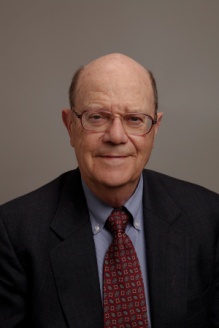 Norman
M. Bradburn,
the Tiffany and Margaret Blake Distinguished Service Professor
Emeritus at the University of Chicago where he was formerly provost
as well as chair of the Department of Behavioral Sciences, and
associate dean of the Division of the Social Sciences. Bradburn is
currently a senior fellow at NORC at the University of Chicago.
Associated with NORC since 1961, he has been director of NORC and
president of its Board of Trustees.
Norman
M. Bradburn,
the Tiffany and Margaret Blake Distinguished Service Professor
Emeritus at the University of Chicago where he was formerly provost
as well as chair of the Department of Behavioral Sciences, and
associate dean of the Division of the Social Sciences. Bradburn is
currently a senior fellow at NORC at the University of Chicago.
Associated with NORC since 1961, he has been director of NORC and
president of its Board of Trustees.
A social psychologist, Bradburn has been at the forefront in developing theory and practice in the field of sample survey research. He has focused on psychological well-being and assessing quality of life, particularly through the use of large-scale sample surveys; non-sampling errors in sample surveys; and research on cognitive processes in responses to sample surveys. His book, Thinking About Answers: The Application of Cognitive Process to Survey Methodology (co-authored with Seymour Sudman and Norbert Schwarz; Jossey-Bass, 1996), follows three other publications on the methodology of designing and constructing questionnaires: Polls and Surveys: Understanding What They Tell Us (with Seymour Sudman; Jossey-Bass, 1988); Asking Questions: A Practical Guide to Questionnaire Construction (with Seymour Sudman; Jossey-Bass, 1982; 2nd edition with Brian Wansink, 2004) and Improving Interviewing Method and Questionnaire Design (Jossey-Bass, 1979).
Bradburn chaired the Committee on National Statistics of the National Research Council/National Academy of Sciences and served on NRC/NACpanels to advise the Census Bureau prior to the 2000 Census. He is a past president of the American Association of Public Opinion Research and has been elected to both the American Academy of Arts and Sciences and to the American Academy of Political and Social Sciences.
F rederick
Conrad
is Research Professor in the Institute for Social Research at the
University of Michigan and in the Joint Program in Survey Methodology
(JPSM) at the University of Maryland, and Professor in the Department
of Psychology at the University of Michigan. He is the director of
JPSM and the University of Michigan’s Program in Survey
Methodology. His research is generally concerned with the
cognitive and social origins of survey measurement, focusing on how
communication technology moderates the quality of responses —
for better or worse. Recently Conrad has studied SMS text interviews,
virtual (computer animated) interviewers, and interactive features in
online questionnaires. And most recently he has been trying to
understand when it might be possible and when it is likely not wise
to produce population estimates from social media data.
rederick
Conrad
is Research Professor in the Institute for Social Research at the
University of Michigan and in the Joint Program in Survey Methodology
(JPSM) at the University of Maryland, and Professor in the Department
of Psychology at the University of Michigan. He is the director of
JPSM and the University of Michigan’s Program in Survey
Methodology. His research is generally concerned with the
cognitive and social origins of survey measurement, focusing on how
communication technology moderates the quality of responses —
for better or worse. Recently Conrad has studied SMS text interviews,
virtual (computer animated) interviewers, and interactive features in
online questionnaires. And most recently he has been trying to
understand when it might be possible and when it is likely not wise
to produce population estimates from social media data.
 John
L. Eltinge
is currently the Associate Commissioner for Survey Methods Research
at the U.S. Bureau of Labor Statistics. He earned a Ph.D. from the
Department of Statistics at Iowa State University in 1987. He is a
fellow of the American Statistical Association; a member of the
Federal Committee on Statistical Methodology; and an associate editor
for Journal of Official Statistics and Survey Methodology Journal.
He previously served as an associate editor for JASA and The American
Statistician; and as the overall program chair for the 2003 Joint
Statistical Meetings. His primary research interests are in
integration of multiple data sources with survey data; incomplete
data; survey optimization; and small domain estimation.
John
L. Eltinge
is currently the Associate Commissioner for Survey Methods Research
at the U.S. Bureau of Labor Statistics. He earned a Ph.D. from the
Department of Statistics at Iowa State University in 1987. He is a
fellow of the American Statistical Association; a member of the
Federal Committee on Statistical Methodology; and an associate editor
for Journal of Official Statistics and Survey Methodology Journal.
He previously served as an associate editor for JASA and The American
Statistician; and as the overall program chair for the 2003 Joint
Statistical Meetings. His primary research interests are in
integration of multiple data sources with survey data; incomplete
data; survey optimization; and small domain estimation.
 Danny
A. Klinefelter
is Honor Professor, Regents Fellow and Extension Economist with Texas
A&M AgriLife Extension and Texas A&M University. He
received his Ph.D. from the University of Illinois in 1979, where he
was a National Science Foundation Research Fellow.
Danny
A. Klinefelter
is Honor Professor, Regents Fellow and Extension Economist with Texas
A&M AgriLife Extension and Texas A&M University. He
received his Ph.D. from the University of Illinois in 1979, where he
was a National Science Foundation Research Fellow.
Dr. Klinefelter was co-developer of the Coordinated Financial Statements for Agriculture (CFS), founder and director of The Executive Program for Agricultural Producers (TEPAP), co-director of the Texas A&M Family and Owner-Managed Business Program for 25 years and serves as executive secretary for the Association of Agricultural Production Executives (AAPEX). He is also a member of the board of AgTexas Farm Credit Services and president of his family’s Illinois farm corporation. Danny chairs the Top Producer Executive Network Advisory Board.
In addition to his academic career, Danny spent 10 years in commercial banking and the Farm Credit System. He is author or co-author of 8 books and over 400 articles on management and finance. Dr. Klinefelter has received multiple awards from the Texas Agricultural Extension Services, also from Texas A&M Association of Former Students, the American Agricultural Economics Association, the Southern Agricultural Economics Association, American Agricultural Editors Association among others. Dr. Klinefelter was named Honor Professor in the College of Agriculture and Life Sciences in 2006 and he was named a Regents’ Fellow by the Texas A&M Board of Regents in 2011.
 James
M. MacDonald
is chief of the Structure, Technology, and Productivity Branch at
USDA’s Economic Research Service. In that position, he shares
management responsibility for the Agricultural Resource Management
Survey (ARMS), a large annual farm survey that links production
practices, farm resources and finances, and farm household
attributes. He leads ERS outreach efforts to inform respondents and
USDA field offices about the uses of the survey, and with other
managers created expanded access to ARMS data for academic users.
James
M. MacDonald
is chief of the Structure, Technology, and Productivity Branch at
USDA’s Economic Research Service. In that position, he shares
management responsibility for the Agricultural Resource Management
Survey (ARMS), a large annual farm survey that links production
practices, farm resources and finances, and farm household
attributes. He leads ERS outreach efforts to inform respondents and
USDA field offices about the uses of the survey, and with other
managers created expanded access to ARMS data for academic users.
As branch chief, he performs and supervises work on the changing structure and organization of U.S. agriculture; the economics of technology choices--such as chemicals, seeds, equipment, and animal drugs—on farms; agricultural productivity measurement and analysis; and science policy as it relates to agriculture. Previously his research was directed toward the effects of railroad deregulation on grain transportation; the causes and consequences of consolidation in livestock production and meatpacking; entry and exit in food processing; USDA food procurement auctions; and competition and retail food pricing. His work has appeared in ERS reports and in leading academic journals in economics and agricultural economics.
MacDonald has also taught at Hamilton College and at Rensselear Polytechnic Institute. He has served on the editorial boards of the American Journal of Agricultural Economics and Agribusiness, and is a Fellow of the Agricultural and Applied Economics Association. Jim received a Ph.D, in economics, from the State University of New York at Buffalo, and a Bachelor’s degree from Siena College.
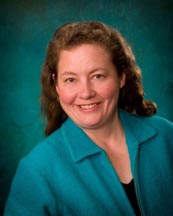 Doris
Mold
is American Agri-Women (AAW) First Vice-President (President-elect).
Mold served six years on the Agricultural Statistics Advisory
Committee for NASS and chaired the committee for three years. She is
President of Sunrise Agricultural Associates, an agricultural
consulting business; an agricultural economist and educator; as well
as a farm co-owner/operator. She teaches and works on
research/education projects at the University of Minnesota (U of
MN), in particular for the MAST International Program. Previously,
she worked as an Agricultural Economist at the University.
Doris
Mold
is American Agri-Women (AAW) First Vice-President (President-elect).
Mold served six years on the Agricultural Statistics Advisory
Committee for NASS and chaired the committee for three years. She is
President of Sunrise Agricultural Associates, an agricultural
consulting business; an agricultural economist and educator; as well
as a farm co-owner/operator. She teaches and works on
research/education projects at the University of Minnesota (U of
MN), in particular for the MAST International Program. Previously,
she worked as an Agricultural Economist at the University.
Mold holds an M.S. in Agricultural and Applied Economics, and a B.S. in Agricultural and Applied Economics, Animal Science and Agricultural Education, from the University of Minnesota.
In late 2014 she was appointed to the Commodity Futures Trading Commission Agricultural Advisory Committee. She is a past AAW Vice-President of Education and a past President of the AAW Foundation. Mold has served as President of Minnesota Agri-Women and currently serves as District 11 President.
Mold serves in a unique position as a producer who uses the data and who provides data to NASS and as an economist who utilizes the data in research, teaching and business. She has a keen interest in developing a better understanding of the roles that people play in production and broader agriculture and has conducted research on the changing roles of women in agriculture.
E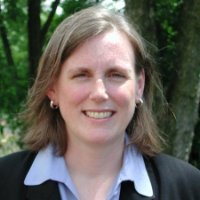 ileen
O'Brien
leads the Buildings Surveys Statistics Team in the Office of Energy
Consumption and Efficiency Statistics at the U.S. Energy Information
Administration (EIA). She is responsible for designing and conducting
the Residential Energy Consumption Survey (RECS), the Commercial
Buildings Energy Consumption Survey (CBECS) and follow-on electronic
survey collections of monthly billing records from energy suppliers.
These surveys are the sole basis for understanding energy uses within
U.S. homes and buildings and yield benchmarks for energy efficiency
standards and long term projections of domestic energy demand. She is
currently leading a multi-year redesign effort to introduce web and
mail collection methods in the household and building surveys with
electronic data transfer protocols for the supplier surveys.
ileen
O'Brien
leads the Buildings Surveys Statistics Team in the Office of Energy
Consumption and Efficiency Statistics at the U.S. Energy Information
Administration (EIA). She is responsible for designing and conducting
the Residential Energy Consumption Survey (RECS), the Commercial
Buildings Energy Consumption Survey (CBECS) and follow-on electronic
survey collections of monthly billing records from energy suppliers.
These surveys are the sole basis for understanding energy uses within
U.S. homes and buildings and yield benchmarks for energy efficiency
standards and long term projections of domestic energy demand. She is
currently leading a multi-year redesign effort to introduce web and
mail collection methods in the household and building surveys with
electronic data transfer protocols for the supplier surveys.
Prior to her EIA appointment, she was the lead survey methodologist on housing surveys and censuses in the Statistical Research Division of the Census Bureau and on environmental and economic surveys at the National Agricultural Statistics Service, USDA. Over 20 years, she has served in many volunteer and elected capacities in national and local chapters of the American Statistical Association and the American Association of Public Opinion Research. She currently serves on several interagency working groups of the Interagency Council of Statistical Policy, Statistical Policy Office of the Office of Management and Budget including content review of American Community Survey, how race and ethnicity are measured in federal collections, and social indicators in Analysis Perspectives of the U.S. Budget.
Her research interests include respondent-interviewer interactions, organizational and employee behaviors in business surveys, and multi-mode data collections. She has a B.A. in Economics from Michigan State University and an M.S. from the Joint Program in Survey Methodology of the University of Maryland, College Park.
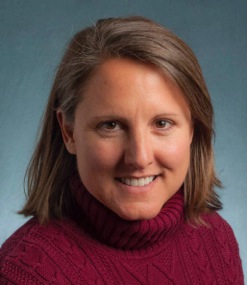 Alicia
Robb
is a Senior Fellow with the Kauffman Foundation. She is also a
Visiting Scholar with the University of California in Berkeley and
the University of Colorado at Boulder. She is the Founder and
past Executive Director and Board Chair of the Foundation for
Sustainable Development, an international development organization
working in Latin America, Africa, and India.
(www.fsdinternational.org).
Alicia
Robb
is a Senior Fellow with the Kauffman Foundation. She is also a
Visiting Scholar with the University of California in Berkeley and
the University of Colorado at Boulder. She is the Founder and
past Executive Director and Board Chair of the Foundation for
Sustainable Development, an international development organization
working in Latin America, Africa, and India.
(www.fsdinternational.org).
Dr. Robb received her M.S. and Ph.D. in Economics from the University of North Carolina at Chapel Hill. She has previously worked with the Office of Economic Research in the Small Business Administration and the Federal Reserve Board of Governors. She is also a prolific author on the topic of entrepreneurship.
In addition to numerous journal articles and book chapters, she is the co-author of Race and Entrepreneurial Success published by MIT Press and A Rising Tide: Financing Strategies for Women-Owned Businesses by Stanford University Press. She serves on the Board of the National Advisory Council for Minority Business Enterprise, the Advisory Board for Global Entrepreneurship Week, and is a guest contributor to outlets such as Huffington Post and Forbes.
N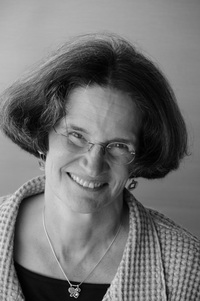 ora
Cate Schaeffer
is Sewell Bascom Professor of Sociology at the University of
Wisconsin, Madison, and also Faculty Director of the University of
Wisconsin Survey Center, where she teaches courses in survey research
methods and conducts research on questionnaire design and interaction
during survey interviews. She received her doctorate from the
University of Chicago in 1984. She recently served on the Public
Opinion Quarterly Advisory Board of the American Association for
Public Opinion Research, the General Social Survey Board of
Overseers, and the Panel Study of Income Dynamics Board of Overseers.
Other professional service includes election to the Council on
Sections Representative for the Survey Research Methods Section of
the American Statistical Association and appointment as a member of
the Census Advisory Committee of Professional Associations.
ora
Cate Schaeffer
is Sewell Bascom Professor of Sociology at the University of
Wisconsin, Madison, and also Faculty Director of the University of
Wisconsin Survey Center, where she teaches courses in survey research
methods and conducts research on questionnaire design and interaction
during survey interviews. She received her doctorate from the
University of Chicago in 1984. She recently served on the Public
Opinion Quarterly Advisory Board of the American Association for
Public Opinion Research, the General Social Survey Board of
Overseers, and the Panel Study of Income Dynamics Board of Overseers.
Other professional service includes election to the Council on
Sections Representative for the Survey Research Methods Section of
the American Statistical Association and appointment as a member of
the Census Advisory Committee of Professional Associations.
Her service for the National Research Council (NRC) includes multiple Panels, notably Panel on the Future of Social Science Data Collection and the Panel on the Design of the 2010 Census, also the Panel to Evaluate Alternative Census Methods, as well as the Committee on National Statistics. She has also served on the American Statistical Association Technical Advisory Committee on the Survey of Income and Program Participation; the Technical Review Committee for the National Longitudinal Survey of Youth; the National Science Foundation Advisory Committee for the Social, Behavioral, and Economic Sciences; and the governing Council of the American Association for Public Opinion Research.
She has also served on the editorial boards of Public Opinion Quarterly, Sociological Methods and Research, Journal of Survey Statistics and Methodology, and Sociological Methodology. In 2010 she was selected as a Fellow of the American Statistical Association.
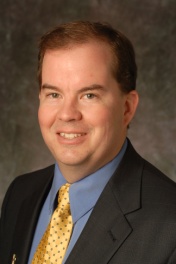 Brian
J. Schilling is
an Assistant Extension Specialist of Agricultural Policy within
Rutgers Cooperative Extension and Assistant Professor of
agricultural, food and resource economics at the School of
Environmental and Biological Sciences, Rutgers University.
Brian
J. Schilling is
an Assistant Extension Specialist of Agricultural Policy within
Rutgers Cooperative Extension and Assistant Professor of
agricultural, food and resource economics at the School of
Environmental and Biological Sciences, Rutgers University.
During his 21 years at the School, much of Dr. Schilling’s research has been focused on New Jersey farm viability, farmland preservation, and agricultural economic development at the urban-rural fringe. Throughout his career Schilling has worked closely with the agricultural and food industries and has served on a number of industry and government task forces and working groups. He is past-president of the New Jersey Agricultural Society and serves on the State Agriculture Development Committee.
He is the author of more than 110 papers and briefings on various issues relating to the food and agricultural system and has given more than 125 invited lectures to academic, business, government, and industry groups. He holds a BS in resource management, an MS in agricultural economics, and a Ph.D. in planning and public policy, all from Rutgers University.
R ichard
Valliant
is a Research Professor at the University of Michigan and the Joint
Program for Survey Methodology at the University of Maryland. He has
over 40 years of experience in survey sampling, estimation theory,
and statistical computing. He was formerly an Associate Director at
Westat and a mathematical statistician with the Bureau of Labor
Statistics.
ichard
Valliant
is a Research Professor at the University of Michigan and the Joint
Program for Survey Methodology at the University of Maryland. He has
over 40 years of experience in survey sampling, estimation theory,
and statistical computing. He was formerly an Associate Director at
Westat and a mathematical statistician with the Bureau of Labor
Statistics.
He has a range of applied experience in survey estimation and sample design on a variety of establishment and household surveys, including the Consumer Price Index, Current Population Survey, Current Employment Statistics survey, Consumer Expenditure Survey, and Health and Retirement Study.
He is also a Fellow of the American Statistical Association, elected member of the International Statistical Institute, author of two textbooks, and has been an editor of several statistical journals.
D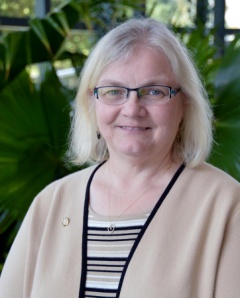 iane
K. Willimack
is the Methodology Director for Measurement and Response Improvement
in the Economic Programs Directorate of the U.S. Census Bureau, where
she led creation of a staff devoted to development, pretesting and
evaluation of data collection instruments for surveys of businesses
and organizations. Previously, she was a survey methodologist
at the National Agricultural Statistics Service of the U.S.
Department of Agriculture.
iane
K. Willimack
is the Methodology Director for Measurement and Response Improvement
in the Economic Programs Directorate of the U.S. Census Bureau, where
she led creation of a staff devoted to development, pretesting and
evaluation of data collection instruments for surveys of businesses
and organizations. Previously, she was a survey methodologist
at the National Agricultural Statistics Service of the U.S.
Department of Agriculture.
Ms. Willimack co-authored the 2013 text Designing and Conducting Business Surveys, the first book in 20 years dedicated solely to business survey methodology. With more than 30 years of experience in establishment surveys, her main research interest has to do with behavioral aspects of the business survey response process and implications for survey design. She holds Masters degrees in applied social research from the University of Michigan and economics from Iowa State University.
A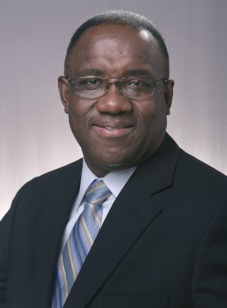 nthony
Yeboah
is a Professor and Chairperson of the Department of Agribusiness,
Applied Economics and Agriscience Education at North Carolina A&T
State University. He received his Ph.D. from Iowa State University.
In addition to his administrative responsibilities, he teaches
graduate level courses in microeconomics, statistics and econometrics
and is also actively engaged in research domestically and at the
international level.
nthony
Yeboah
is a Professor and Chairperson of the Department of Agribusiness,
Applied Economics and Agriscience Education at North Carolina A&T
State University. He received his Ph.D. from Iowa State University.
In addition to his administrative responsibilities, he teaches
graduate level courses in microeconomics, statistics and econometrics
and is also actively engaged in research domestically and at the
international level.
His research interest focuses on finding ways to improve the economic viability of small-holdings in North Carolina. His research in recent years identified enterprise diversification, love-of-farming, and risk management strategies as the driving forces behind success and survival of small-scale farms in North Carolina. Specifically, the adoption of value-added processing, niche marketing and enterprises that generate income can significantly impact economic viability of small farms. Diversifying farm operations creates a greater opportunity for year-round income and can contribute to the success of the farm business.
He has also analyzed the economic feasibility of growing canola on marginal lands as a source of biofuel to provide additional income to small farmers without competing with corn production. His ongoing research is a study of small farm agritourism as a tool for community development in North Carolina.
AGENDA
NASS Panel on Federal Statistics on Women and Beginning Farmers
April 2-3, 2015
Thursday, April 2, 2015
9:00 a.m. Welcome and Introductions
9:15 a.m. Statement of Panel’s Charge
Public Comments
10:00 a.m. Joe Reilly
10:15 a.m. Break
10:30 a.m. Motivation for the Panel
11:30 a.m. Lunch
1:00 p.m. Deputy Secretary Harden
1:30 p.m. Presentation of Materials
2:45 p.m. Break
3:00 p.m. Presentation of Materials
4:15 p.m. Summary and Panel Charge
4:45 p.m. Wrap-up
Friday, April 3, 2015
9:00 a.m. Panel Deliberations
Breaks and lunch will be held when convenient for the panel
4:45 p.m. Wrap-up
APPENDIX B: Questionnaire (Section 6) – Version as of 30 September 2015
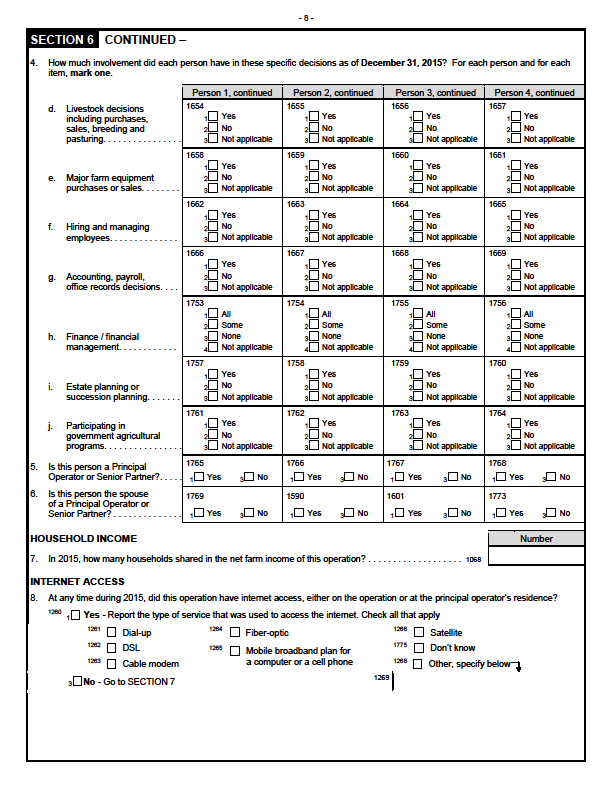
| File Type | application/vnd.openxmlformats-officedocument.wordprocessingml.document |
| Author | Owner |
| File Modified | 0000-00-00 |
| File Created | 2021-01-23 |
© 2026 OMB.report | Privacy Policy